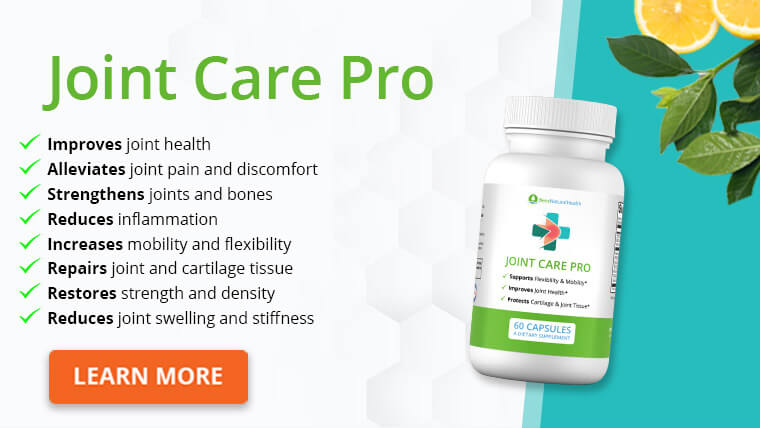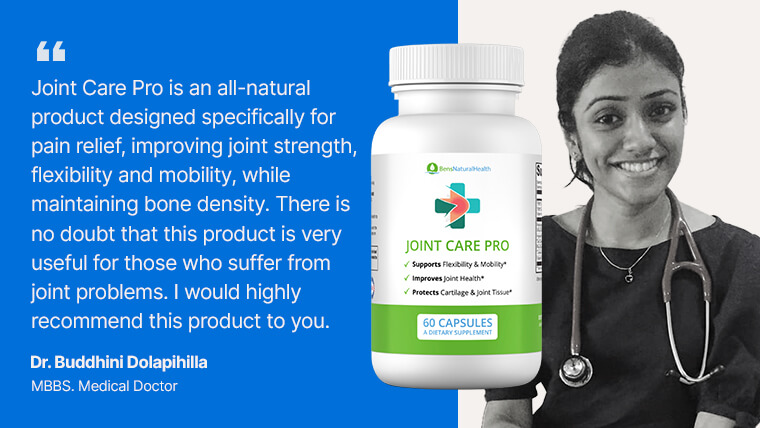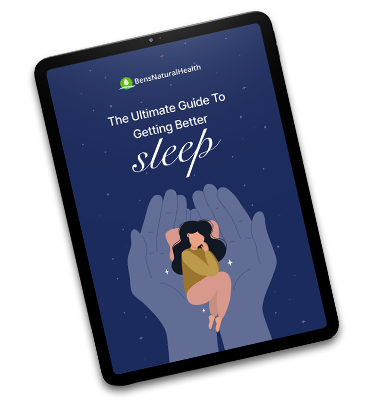Osteoporosis is a significant health issue, especially among older adults or those above the age of 65 years.
It is associated with a higher risk of fractures in the age groups since osteoporosis is a condition characterized by bone demineralization and weakening.
Though osteoporosis is mainly about the weakening of the bones due to demineralization, the condition mainly occurs due to age-related hormonal changes.
Since these changes are more severe in women, osteoporosis is a more significant issue in women.
Although osteoporosis incidence increases with advancing age, it is not rare in young adults. Thus, people need to know what to do about osteoporosis.
Epidemiological studies show that the global prevalence of osteoporosis in women is above 23%, whereas in men above 11%. The majority of older adults are living with osteoporosis.
Thus, it is a common health issue, and it is vital to know how to prevent osteoporosis.
What is osteoporosis?
Osteoporosis is a medical condition characterized by a decrease in bone density and a corresponding increase in the risk of fracture.
It is a progressive disease that affects the bones, making them more fragile and susceptible to fractures.
In healthy bones, there is a constant cycle of bone destruction (resorption) and bone formation (deposition).
With osteoporosis, there is an imbalance in this cycle, leading to a net loss of bone mass and density. This can weaken the bones, making them more prone to fracture.
Doctors often call osteoporosis a “silent disease” as it almost causes no symptoms until a fracture occurs. Thus, knowing how to prevent osteoporosis is very important.
Additionally, it is essential to know that it most commonly affects older women, though it can affect both men and women of different age groups.
The amount of bone tissue and the mineral content of the bones determines bone density.
In healthy bones, the bone tissue is strong and dense, while in osteoporotic bones, the tissue is weaker and less dense. This makes the bones more susceptible to fractures, even from minor falls or injuries.
The most common fracture sites in osteoporosis are the wrist, hip, and spine. Hip fractures can be particularly serious, leading to decreased quality of life, immobility, and even death.

Causes and risk factors
Osteoporosis occurs due to several factors causing loss of bone density and, thus, elevated risk of fractures.
Before discussing what to do about osteoporosis, understanding these factors is vital. Some of the major causes and risk factors of osteoporosis include:
1) Age
As people get older, they naturally lose bone density. This loss of bone density increases the risk of osteoporosis.
In addition, women are at higher risk of osteoporosis after menopause when the production of estrogen, a hormone that helps maintain bone density, decreases.
2) Gender
Women are at higher risk of developing osteoporosis than men, especially after menopause.
3) Hormonal issues
Hormonal changes can play a significant role in the development of osteoporosis. The two main hormones that affect bone health are estrogen and testosterone. Therefore, boosting their levels play a vital role in osteoporosis prevention.
4) Body size and frame
Small, thin-boned people have a higher risk of osteoporosis than larger, heavier people with larger bones.
5) Genetics
Some people may inherit a predisposition to osteoporosis from their parents, which means they are more likely to develop the condition.
6) Lack of physical activity
Physical activity helps build and maintain strong bones, so a lack of exercise can contribute to osteoporosis.
7) Smoking
Smoking can negatively impact bone health and increase the risk of osteoporosis.
8) Excessive alcohol consumption
Binge drinking or abusing alcohol can lead to decreased bone density and increase the risk of osteoporosis.
9) Certain medications
Certain medications, such as glucocorticoids and anticonvulsants, can increase the risk of osteoporosis by reducing the amount of calcium in the bones.
10) Nutritional deficiencies
To prevent osteoporosis, consume foods rich in calcium, phosphorus, magnesium, zinc, vitamin D, C, K, and other micronutrients.
11) Medical conditions
Certain medical conditions, such as celiac disease, hyperthyroidism, and liver disease, can increase the risk of osteoporosis by impacting bone health.
Though there are many causes for osteoporosis, it is worthwhile noticing that hormonal changes due to aging, menopause, and andropause, and among the leading causes of osteoporosis. Hence, normalizing hormones is an important way to prevent osteoporosis.
It’s important to understand that having one or more risk factors doesn’t mean you will develop osteoporosis, but it increases your chances.
By understanding your risk factors, you can take steps to reduce your risk and maintain strong, healthy bones.

18 ways to prevent osteoporosis
Preventing osteoporosis is crucial for people who are at risk of developing the condition. Therefore, it is vital to know what helps osteoporosis and how to prevent it.
The good news is that there are multiple steps you can take to minimize your risk and maintain strong, healthy bones. Here are some effective ways to prevent osteoporosis:
1) Calcium
Calcium is an essential mineral for maintaining strong and healthy bones. It helps build and preserve bone mass and density, which is critical to prevent osteoporosis.
The recommended daily calcium intake for adults varies based on age and gender, but it is generally between 1000-1200 milligrams per day. Prevention of osteoporosis includes adequate intake of calcium.
Calcium is present in a variety of foods, including dairy products (such as milk, cheese, and yogurt), leafy green vegetables (such as spinach and kale), and fortified foods (such as orange juice and tofu). It’s also available as a supplement in various forms, including calcium carbonate and citrate.
2) Vitamin D
Adequate vitamin D intake helps the body absorb calcium, so make sure you’re getting enough of this nutrient as well.
Sunlight, fatty fish, and fortified dairy products are good sources of vitamin D. One can also supplement vitamin D for healthy bones. Prevention of osteoporosis includes adequate intake of vitamin D.
3) Vitamin K
Vitamin K helps regulate the activity of osteoblasts and osteoclasts, cells that are involved in bone remodeling. Adequate vitamin K intake can help prevent osteoporosis and reduce the risk of fractures.
Good sources of vitamin K include green leafy vegetables, such as spinach and kale, and vegetable oils. Supplementing vitamin K could be another option.
4) Magnesium & Zinc
Apart from calcium, magnesium, and zinc are two other important bone minerals deficient in osteoporosis patients.
Magnesium plays a vital role in bone metabolism, whereas zinc is involved in collagen synthesis, one of the crucial proteins in bone formation.
5) Women should consider phytoestrogens
Though hormone replacement therapy in men and women might be an option, it is reserved for more severe cases due to the risk of side effects. Thus, one of the safer options could be using phytoestrogens.
Phytoestrogens are plant-based compounds that have estrogen-like properties. They can be found in foods such as soybeans, whole grains, and certain fruits and vegetables.
Some studies have suggested that phytoestrogens may play a role in maintaining bone health and preventing osteoporosis.
For example, phytoestrogens may help increase bone density, regulate hormone levels, and have anti-inflammatory effects. Those living with osteoporosis may benefit from high doses of phytoestrogen supplements.
6) Isoflavones
These are a type of phytoestrogen found in certain plants, such as soybeans. Some studies have suggested that isoflavones may play a role in the management of osteoporosis.
For example, some research has shown that isoflavones may help increase bone density, reduce bone loss, and regulate hormones in postmenopausal women.
Additionally, isoflavones have anti-inflammatory and antioxidant effects, which may play a role in preserving bone health and helping to prevent osteoporosis.
7) Men must consider natural testosterone boosters
In older men, age-related hypogonadism and low testosterone level are important reasons for weaker bones. Since testosterone therapy is not an option in most cases, using natural testosterone boosters may be an option to improve bone health in men.
Thus, the prevention and treatment of osteoporosis include taking care of hormonal health.
8) Regular weight-bearing exercise
Weight-bearing exercises, such as walking, running, and jumping, can help strengthen bones and reduce the risk of osteoporosis. Try to engage in at least 30 minutes of weight-bearing exercise most days of the week.
It is vital to realize that exercise is not just for strengthening muscles. It also strengthens bones. Exercise enhances bone remodeling and promotes mineral deposition.
9) Limit alcohol consumption
Binge drinking or abusing alcohol can negatively impact bone health and increase the risk of osteoporosis.
Experts recommend limiting alcohol intake to a single drink a day for women and not more than two drinks a day for men. Hence, the prevention and treatment of osteoporosis include reducing alcohol intake.
10) Don’t smoke
Smoking weakens bones and increases the risk of osteoporosis, so quitting smoking is essential for bone health. Additionally, it is also good for vascular health.
11) Manage your diabetes
Diabetes is one of the most common metabolic disorders. It is vital to understand that diabetes is also associated with higher osteoporosis risk.
Managing diabetes better can reduce the risk of osteoporosis later in life.
12) Eat a healthy diet
A well-planned diet that includes ample amounts of fruits, vegetables, whole grains, and lean protein can help maintain strong bones and reduce the risk of osteoporosis.
Try to eat a variety of healthy foods every day. If you want to learn more about osteoporosis and diet, we have a dedicated blog for that.
13) Get enough sleep
Sleep is essential for overall health, including bone health. Try to get seven hours of sleep or more every day.
Get Your FREE Sleep Guide
- Learn how to naturally improve your sleep
- Dietary recommendations, supplements, and lifestyle changes
- Developed exclusively by our medical doctor
14) Stay active
Engaging in physical activity and staying active can help maintain strong bones and reduce the risk of osteoporosis. Thus, participate in at least 30 minutes of physical activity most days of the week.
15) Avoid long-term use of glucocorticoids
Glucocorticoids are a type of medication that can increase the risk of osteoporosis by reducing the amount of calcium in the bones.
If you’re taking glucocorticoids, talk to your doctor about how to minimize the risk of osteoporosis.
16) Monitor bone density
Regular bone density tests can help you monitor your bone health and catch osteoporosis early when it’s easier to treat.
17) Consider medication
If you have osteoporosis or are at high risk of developing the condition, medication may be prescribed to help slow the progression of the disease and reduce the risk of fractures.
18) Maintain a healthy weight
Being overweight or obese can increase the risk of osteoporosis, so it’s important to maintain a healthy weight.
Try to achieve and maintain a body mass index (BMI) in the healthy range. Moreover, this is also good for metabolic health.
In addition to these steps, it’s also important to be mindful of your posture and the way you carry yourself.
Poor posture can put additional strain on your bones and increase the risk of osteoporosis, so try to stand up straight and maintain good posture throughout the day.
Ben’s Joint Care Pro
Joint Care Pro, our joint health supplement, contains natural, proven ingredients that support joint care and joint health.

It is designed to improve mobility and flexibility, reduce joint pain, restore joint strength, protect cartilage and joint tissue, and rebuild strength and density.
Conclusion
Osteoporosis is a relatively common health issue affecting millions of people worldwide. It occurs when bones become weak and brittle, increasing the risk of fractures.
Though there is no cure for the condition, there are multiple things a person can do to prevent or manage osteoporosis.
A balanced diet rich in micronutrients like calcium and vitamin D, regular exercise, avoiding smoking and unnecessary alcohol consumption, and maintaining a healthy weight are all important steps you can take to maintain good bone health.
Limiting caffeine, salt, and animal protein and taking care of your teeth is also important.
If you’re postmenopausal, hormone replacement therapy may also help reduce the risk of osteoporosis. Alternatively, you can consider phytoestrogens, and natural testosterone boosters, as these are safer options.
Ultimately, the best way to prevent osteoporosis is to maintain a healthy lifestyle and to talk to a doctor if you’re concerned about your bone health. By taking these steps, you can maintain strong bones and reduce the risk of osteoporosis.
Explore More








